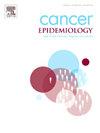乳腺癌诊断模式的临床结果:对国家乳腺癌筛查方案的综合评估
IF 2.3
3区 医学
Q3 ONCOLOGY
引用次数: 0
摘要
乳腺癌是全世界几乎每个国家妇女诊断和癌症相关死亡的主要原因。为了减少和控制乳腺癌死亡率,卢森堡于1992年实施了一项以人口为基础的有组织方案——乳房x光检查方案。我们的目的是通过检测模式比较卢森堡符合条件的筛查人群中诊断出的乳腺癌的临床和筛查特征。方法从卢森堡国家癌症登记处(Registry National du cancer, RNC)中纳入2013年至2018年期间诊断为首次乳腺癌的1618名50-71岁女性。检测模式(筛查检测、间隔检测和诊断检测)是通过将RNC数据与2011年至2018年期间参与乳腺x线摄影规划的144270人联系起来确定的。结果筛检乳腺癌的诊断年龄较轻,多为原位发现,诊断阶段较低,体积较小,淋巴结浸润较少,保守手术治疗的频率高于筛检乳腺癌。间隔检测的病例原位癌的比例最低,并表现出不同的分子亚型,通常被认为更具侵袭性。第一轮参与后发现的癌症预后比随后几轮发现的癌症更差。第二年确诊的间隔期癌症患者预后比第一年确诊的患者差。在筛查检测到的病例中,在倒数第二阶段及时参加筛查的患者预后最好,而在诊断检测到的病例中,在这段时间内没有参加筛查的患者预后最差。结论定期参加乳腺x线摄影检查与早期发现和晚期乳腺癌诊断相关。然而,筛查参与者中更健康的行为也可能有助于这些结果。编制的指标支持公共卫生政策进一步提高其有效性。本文章由计算机程序翻译,如有差异,请以英文原文为准。
Clinical outcomes by breast cancers diagnostic modes: A comprehensive evaluation of a national breast cancer screening programme
Introduction
Breast cancer is the leading cause of diagnosis and cancer-related death among women in almost every country worldwide. To reduce and to control breast cancer mortality, Luxembourg implemented the Programme Mammographie, a population-based organised programme in 1992. We aimed to compare the clinical and screening characteristics of breast cancers diagnosed in Luxembourg’s eligible screening population by detection modes.
Methods
1618 women aged 50–71 diagnosed with a first breast cancer between 2013 and 2018 were included from Luxembourg National Cancer Registry (Registre National du Cancer, RNC). The detection mode (screen-detected, interval-detected, and diagnosis-detected) is determined by linking RNC data with 144,270 participations in the Programme Mammographie between 2011 and 2018.
Results
Screen-detected breast cancers were diagnosed at younger ages, more often found in situ, at a lower stage at diagnosis, smaller, showed less lymph node invasion, and were more frequently treated with conservative surgery than diagnosis-detected. Interval-detected cases had the lowest proportion of in situ cancers and displayed distinct molecular subtypes usually considered as more aggressive. Cancers found after the initial round of participation had worse prognosis than those found after subsequent rounds. Interval cancers diagnosed during the second year had worse prognosis than those diagnosed in the first year after participation. The best prognosis was identified in screen-detected cases whose participation was on time regarding the penultimate, and the worst in diagnosis-detected with no participation over the period.
Conclusions
Regular participation in the Programme Mammographie is associated with earlier detection and less advanced forms of breast cancer at diagnosis. However, healthier behaviors among screening participants might also contribute to these outcomes. The indicators produced supports public health policies to further increase its level of effectiveness.
求助全文
通过发布文献求助,成功后即可免费获取论文全文。
去求助
来源期刊

Cancer Epidemiology
医学-肿瘤学
CiteScore
4.50
自引率
3.80%
发文量
200
审稿时长
39 days
期刊介绍:
Cancer Epidemiology is dedicated to increasing understanding about cancer causes, prevention and control. The scope of the journal embraces all aspects of cancer epidemiology including:
• Descriptive epidemiology
• Studies of risk factors for disease initiation, development and prognosis
• Screening and early detection
• Prevention and control
• Methodological issues
The journal publishes original research articles (full length and short reports), systematic reviews and meta-analyses, editorials, commentaries and letters to the editor commenting on previously published research.
 求助内容:
求助内容: 应助结果提醒方式:
应助结果提醒方式:


